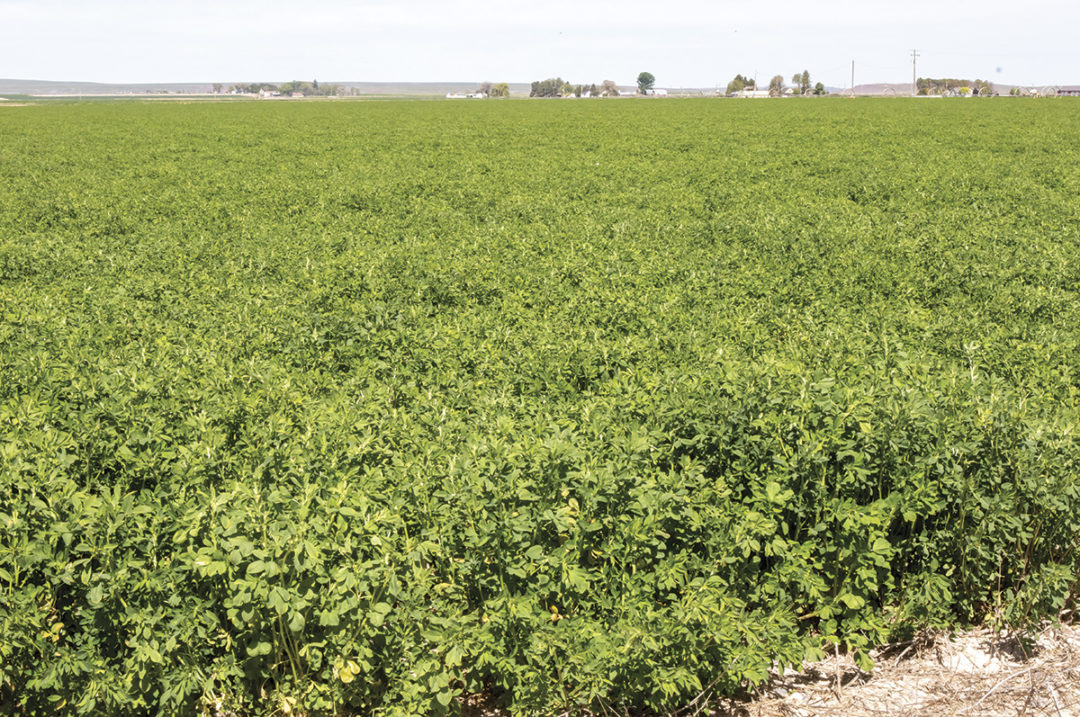In the ever-evolving world of sustainable agriculture, one crop stands tall for its exceptional benefits to both ruminant animals and your farm’s bottom line: alfalfa. This versatile forage is a nutrient-rich option for dairy nutrition and provides an array of advantages for establishing healthy soil.
A nutritional powerhouse for dairy cows
At the heart of alfalfa's appeal lies its superior nutritional profile with elevated protein content, less rumen-filling properties and high rate of digestibility, making it a top choice to enhance a dairy herd's health and performance.
Alfalfa’s protein quality surpasses that of many other forages, providing a balanced amino acid profile that complements the dietary needs of dairy animals. With an amino acid profile similar to milk and high lysine content, alfalfa complements corn silage-based diets and supports greater milk protein.
Even with multiple harvests per year of varying quality, growers can rely on the protein value alfalfa offers. As the highest protein-containing forage that they can grow, the protein content varies minimally between cuttings (when harvested at similar maturity), sparing the need for excessive purchased protein in the diet. Research from the Miner Institute sheds light on alfalfa's contribution to milk production. When alfalfa comprised around 30% to 50% of the forage, a positive associative effect was observed between alfalfa and corn silage, leading to gains in milk protein yield.
Another characteristic of alfalfa is its low neutral detergent fiber (NDF) content. This unique feature makes it less filling for ruminant animals, allowing them to consume more feed and maximize nutrient absorption. With greater dry matter intake (DMI), cows fed with alfalfa show enhanced milk production, ultimately benefiting the dairy farmer's bottom line.
Optimal resilience, flexibility and performance
Unpredictable weather patterns have been posing challenges in many regions this year. In this regard, alfalfa stands out as a champion of resilience. During droughts, while other forages may wither and reduce in tonnage, alfalfa has the extraordinary ability to go dormant, patiently waiting for rain to return.
According to an ongoing University of California – Davis study, alfalfa crops produced 95% of yield after a 25% irrigation reduction and still achieved 80% yield even after a 50% irrigation reduction. This unique adaptation ensures a consistent and reliable supply of high-quality forage, even in the face of water scarcity.
Alfalfa boasts a plethora of sustainability benefits. Carbon sequestration, improved soil structure, nitrogen-fixing abilities, erosion reduction and water use efficiency are just a few of the benefits of alfalfa in your rotation. Beyond these, and in the pursuit of continuous improvement, science has unlocked the potential of specific traits in alfalfa. Two standout traits are Roundup Ready alfalfa and HarvXtra, each offering unique advantages to farmers.
Roundup Ready alfalfa simplifies weed control, making it easier for farmers to manage their fields efficiently. This trait streamlines the establishment process, ensuring a robust alfalfa stand that sets the stage for successful harvests and higher yields.
Additionally, HarvXtra technology enhances the performance of alfalfa by optimizing its harvest flexibility. With this trait, farmers can better manage the quality/yield trade-off, tailoring harvest to the specific needs of their dairy operation. By fine-tuning harvest schedules, dairy producers can maintain forage quality, resulting in increased tonnage, milk production and healthier cows. By incorporating HarvXtra into field rotations gradually, growers can achieve enhanced benefits while maintaining consistency in forage quality.
Embrace the power of alfalfa
As the agricultural landscape continues to evolve, embracing the power of alfalfa is a smart and reliable choice for growers and dairy farmers. By leveraging alfalfa’s nutritional advantages, resilience and trait benefits, dairy farmers can pave the way for healthier, more productive herds while contributing to the long-term health of their soil.













